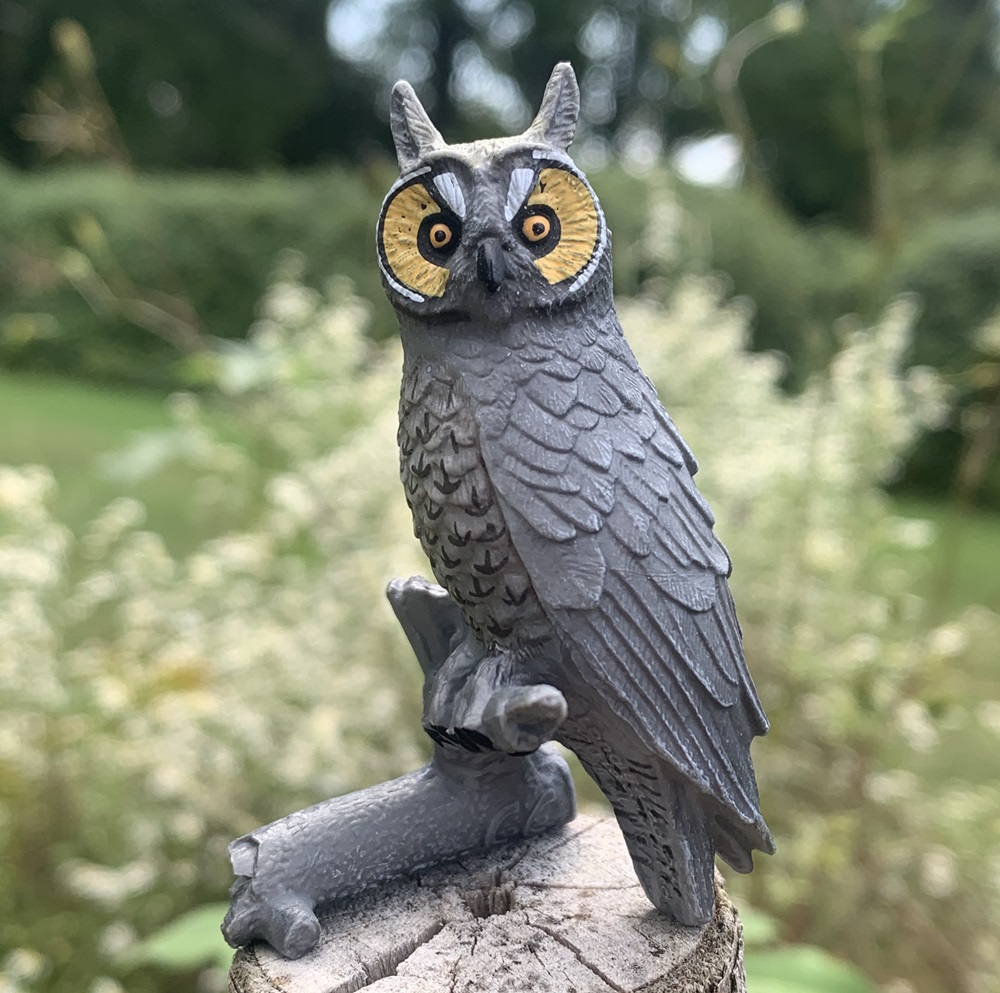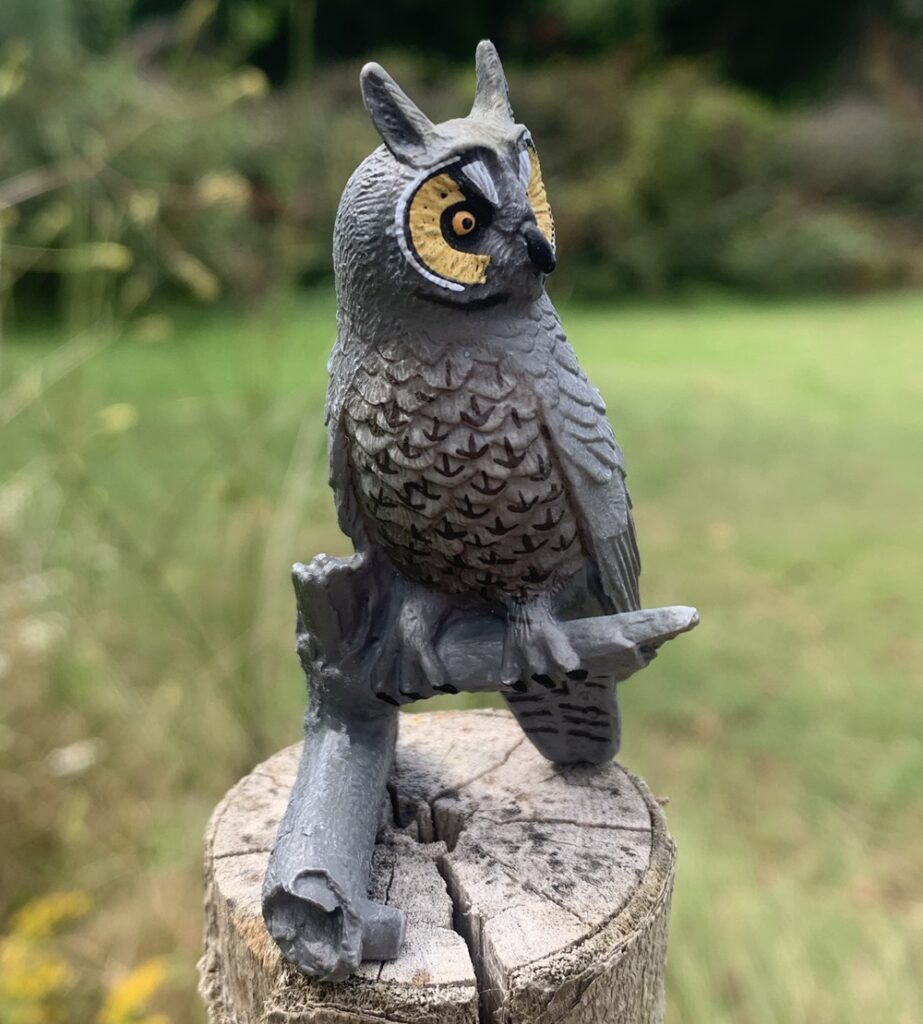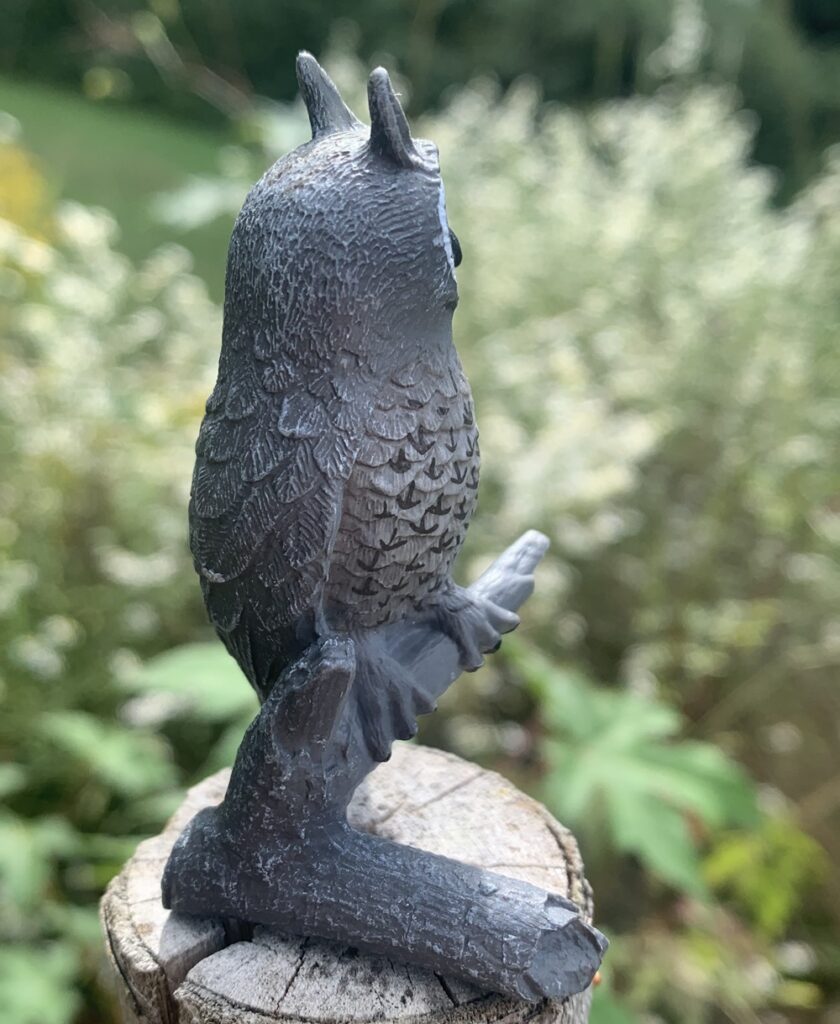It’s October again, and that means for the entire month we’ll be featuring spooky creatures and creepy crawlers here on the blog. Halloween is big in my household. Decorations go up in September, apple cider is well stocked in the fridge, pumpkin scented candles burn, and horror movies play every night. Halloween isn’t just a day, it’s a way of life that lasts for nearly two months! Being able to combine my love for the season with my animal figure hobby is something I look forward to every year! For my first contribution we’ll be looking at a nocturnal hunter synonymous with Samhain, the owl. More specifically, the long-eared owl (Asio otus) by Safari Ltd.

The long-eared owl is a slim-bodied mid-sized species of owl with long prominent ear tufts. These owls have a large distribution and can be found in much of North America, Europe, Asia, and small portions of northern Africa. They tend to live along forest edges where they use the shelter of the trees to roost and nest and adjacent open spaces to hunt. They mostly eat small mammals up to the size of young rabbits but will also eat birds, bats, weasels, snakes, and lizards.

Long-eared owls measure 12-16” (31-40 cm) long and have a wingspan of 34-40” (86-102 cm). The figure has a length of 2.5” which I guess puts it at about 1/6 in scale but I’m never very confident calculating scale with bird figures. The Safari long-eared owl is presented in a perched pose, resting upon a tree branch and looking leftward.

The detail on this figure is superb with intricate feather detail across the body. Along the back the folded wing feathers create a layered appearance. Each feather is sculpted with a discernable rachis and individual barbs. Fine wispy feathers are etched into the head and face with those on the facial disk radiating outwards.

The talons, which are affixed to a tree branch, are finely sculpted and appear sharp. Talons are usually short and blunt in figurines, but they look decently sharp here, probably because there’s no risk of a kid stabbing themselves with them. The branch is also nicely detailed with a bark-like texture, portions where the bark has peeled off, and broken branch tips.

The paintjob is simple and does little to convey the complex colors and patterns of the long-eared owl. Nearly the entire figure is gray, including the tree branch. In life the long-eared owl is also gray, but this is mottled with brown, black, white, and buff colors. Some attempt has been made to illustrate dark streaking and barring on the chest’s contour feathers.
On the head the facial disk is buff colored with a white edge. White streaks are evident above the eyes which are orange with black pupils. Black rings encircle the eyes, and the beak is also black. In life the long-eared owl has a dark vertical stripe running through each eye with vertical white lines running between the eyes. The ear tufts also tend to have buff-colored fringes but that isn’t here either. An attempt to better illustrate these features would have been appreciated.

The simplistic paintjob is somewhat unfortunate here. Although I don’t expect much from little figures like this, Safari has demonstrated that they can do better, such as on their eagle owl (a more recent release, to be fair). That said, the sculpting is lovely, and the toy gets the general idea of a long-eared owl across. The Safari long-eared owl was released in 2018 and is the best option for this species available. Figures by Bullyland and Kaiyodo are retired and crude in comparison. I’m happy to have this wide ranging yet shockingly obscure species in my collection.
Disclaimer: links to Ebay and Amazon on the AnimalToyBlog are affiliate links, so we make a small commission if you use them. Thanks for supporting us!



